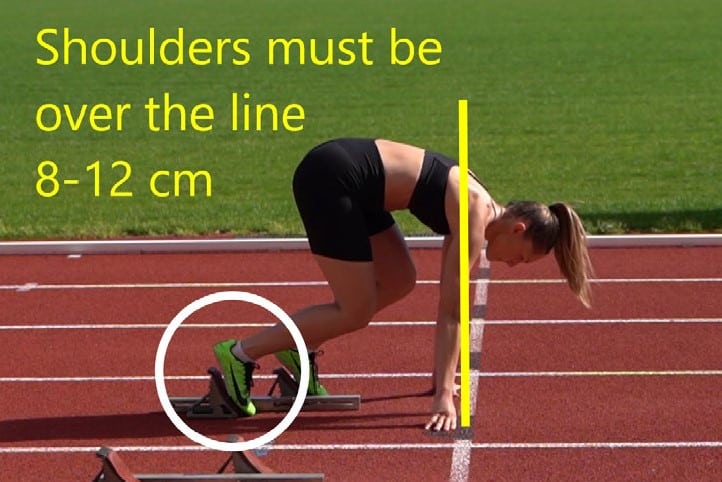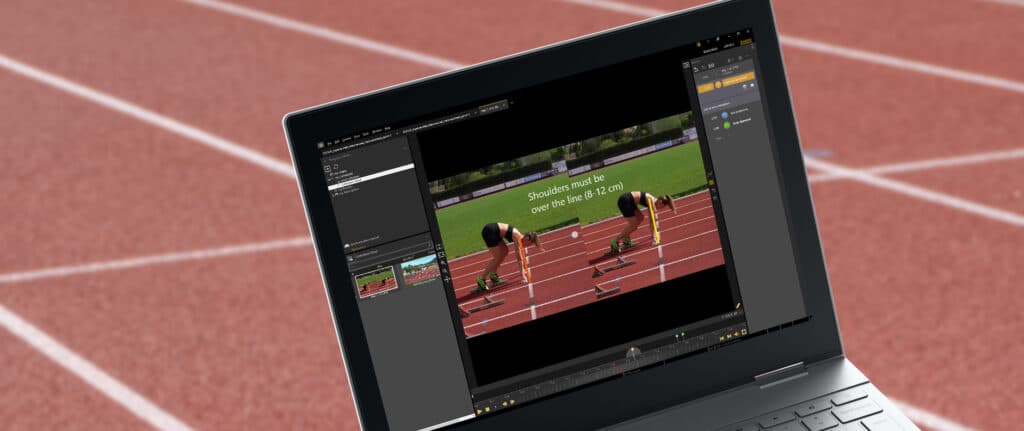Indicators of Performance
For each goal you want to work on, you’ll analyze one or several metrics of performance.
Again, keep few and clear metrics, because measuring a lot of angles isn’t always relevant
and will waste your time. As a coach (helped sometimes by physiotherapists), you know how
to recognize effective or inefficient technique and how to improve it.
For example, if your goal is to improve your athlete’s speed throughout his hurdle race, it
will be important to focus on several metrics, such as:
- the proper accelerative rhythm and the stride
pattern to the first hurdle - the hurdler’s takeoff distance from the first
hurdle (and all subsequent hurdles) - the pelvis neutral, and in balanced position
- the hips’ position at takeoff.
Note some other examples of indicators that are easy to analyze:
Sprint
Goals:
I want my athletes’ starts consistent and technically accurate
Indicators:
- Hip position compared to shoulders and head in the set position
- The alignment of the head and spine
- Shoulders position
- Body weight distribution for efficient acceleration

Long Jump
Goals:
I want to improve the speed generated during my athletes’ approach.
Indicators:
- Run-up length
- Acceleration rate
- Arm range of motion
Triple Jump
Goals:
I want my athletes to sustain strong horizontal velocity during the hop.
Indicators:
- Athlete’s position at take-off
- Correct technique during the hop
When you video your athletes, keep indicators like these in mind, for accurate assessment. You have to obtain a video that allows you to evaluate all of these.
You’re almost a ninja of track and field video analysis! Now, let’s evaluate your athletes’ performance.
